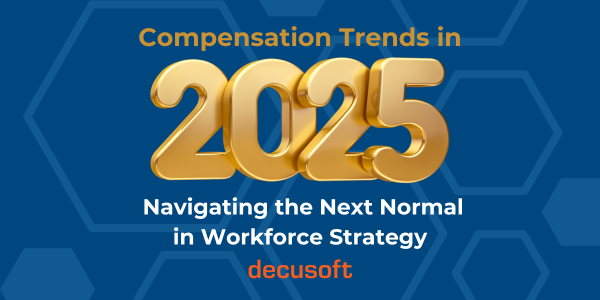Pay equity represents an important part of a fair and just world. For many businesses, disparities in pay resulting from age, sex, gender, and race are an ongoing problem. Businesses are becoming increasingly aware of the need to ensure equal pay for workers across the spectrum of their staff.
Equity presents a vital solution to the ongoing problem of pay disparity. Providing employees with a salary based on performance gives them the opportunity to grow through their own effort and hard work. Compensation and HR professionals should consider how the use of a pay equity analysis can improve their organization.
Why Is Pay Equity Important?
While there are many barriers holding minority groups back, pay equity represents a fundamental problem that everybody can work together to solve. Despite progress in many areas of society, pay gaps still exist, and many minority workers still have trouble getting equal pay for equal work.
Wage discrimination leaves employees without due compensation and can result in legal or financial trouble, negative public perception, and a lack of good employees.
Modern organizations are publicly scrutinized more than ever. Brand management, legal and social pressures, and employee retention are all important reasons to consider pay equity. It’s important to show employees their work is valued, no matter what background they come from.
What Is a Pay Equity Analysis?
For organizations to ensure pay equity for their workers, it’s necessary to perform ongoing audits that give insights into both payments and performance metrics for all employees. By addressing potential pay disparities with continuous review processes, employers are well equipped to offer better employment opportunities to their workers.
Pay equity analysis gives employers insight into how to manage their operations. Decision-making, information systems, and internal processes require an informed point-of-view for the resolution of potential disputes.
A pay equity analysis provides a comprehensive review of the most important metrics for tracking payment amounts per work done across the organization.
How to Perform a Pay Equity Analysis
Equal pay audits require a firm grasp of employee roles, responsibilities, and performance metrics. Organizations that want to create valid pay equity analyses for their staff need to consider how to approach each step fairly and accurately.
Defining key decisions and providing better guidance for employees is vital for effectively managing pay equity. By creating objectives, gathering information, and establishing new systems for employee payment, organizations act to improve equity for all workers.
Plan Goals
For a successful pay equity analysis, it’s important to plan accordingly. Compensation and HR professionals must first consider why the audit is being performed. By creating guidelines or outlining how the measurements will be conducted, a more fair and accurate process can be created.
Issues in gender, race, or other minority pay gaps, compliance problems, and other motivations for undergoing payment equity analyses will mean a different approach to data collection and affect the scope of subjects.
If your organization is building a payment equity solution, make sure to set aside enough resources so that you have the staff to get the work done within a set amount of time. Plan goals and identify performance metrics that will be tracked. Consider what specific data points you will be looking at and what problem you are trying to solve.
Collect Data
After considering end goals, organizations should focus on collecting relevant information. When performing a pay equity analysis, professionals should consider what data has to be collected and how much. Decision-makers should focus their data-collection plans according to what their intended solutions are.
Make sure to account for the legal aspects of data collection. If using legal documents or private employee information, consider what has to be publicly disclosed. Compensation and HR professionals should work to find root causes and driving factors in pay disparity by reviewing metrics across the entire organization.
Don’t waste your time sifting through unimportant irrelevant data. Examine past and current trends in pay for specific positions and assess which employees are performing based on pre-established metrics. Consider the groups that are important based on criteria such as age, race, gender, sexuality, and nationality.
Build Processes
With attainable goals and practical data, it’s time to design new methodologies built with purposeful consideration of employee diversity. Compensation and HR professionals who want to create effective systems for finding and reducing inequities need to use pragmatic monitoring and collection solutions.
Any compensation and HR professionals looking for more manageable payment tracking and analysis should use coherent systems designed with users in mind. Internal processes should be measurable and repeatable for more accurate results.
Don’t act on assumptions. Make sure to formulate strategies based on collected data.
Use templates to outline rules and regulations for employees to follow and create structured targets for employees to reach. Lay out practical achievements such as how an employee might get a raise or promotion. It’s important to be specific.
Take Action
Now that you’ve created a plan, it’s time to put it into action. By collecting data and using it to establish new systems and processes, organizations are better equipped to reach their target goals. This means it’s time to act on stated intentions and work to coordinate changes in behavior across the organization.
Compensation and HR professionals should start to review and manage payments with equity goals in mind. To improve fairness across an organization, leaders must consider defined targets and use pre-built plans and available resources to reach them.
For your new policies to take effect, you have to ensure compliance across all targeted departments. Implement your strategy throughout the organization, give everybody equal opportunities to perform, and support workers in job development.
Use training programs to improve employee skills in management and other vital areas of the company. This approach will ensure measures taken towards improving pay equity are adopted with less hassle.
Assess Results
Once equity-based policies have been implemented, it’s vital to perform ongoing monitoring and reporting. Compensation and HR professionals need to use the results of their programs to consider whether they need different options for resolving the pay disparities within their workforce.
For better results, organizations should consider the efficacy of their strategies and how they can be improved over time. This analysis means looking at groups across the organization and making adjustments to ensure targets are met.
When assessing results, you have to first consider whether specific actions made a difference and then act accordingly.
Review goals and processes so you can draw discernable links between policies and results. Look at whether specific policies will help you create lasting solutions. Don’t assume your results are accurate — make sure to look at outliers and consider data points for validity.
Who Can Benefit?
It isn’t just the employees who benefit from more equitable pay. When individuals within an organization are properly compensated for their work, others take notice. This notability gives employers more incentives when they’re considering compensation for their workforce.
Pay equity analysis is an important tool allowing compensation and HR professionals to improve the ways that they remunerate their employees. Businesses, coworkers, and anyone else with a vested interest in the organization will be better off with ongoing pay equity analyses.
Employers
Offering their workers equitable compensation gives employers more opportunities for success. Equitable pay generates engagement, creates higher morale, and ensures a more satisfied workforce.
If you want to hire and retain the best talent, having a pipeline for equity across your organization’s staff is essential. Using pay equity analysis will ensure a lower employee turnover rate and help you maintain legal compliance.
Peers
Equitable pay doesn’t just improve job satisfaction for the employees who receive it — it also promotes better attitudes among their counterparts. When coworkers receive better pay, QoL perceptions improve across the organization.
If your employees make more, their peers will have more confidence because they feel as though they have more opportunities for growth themselves. This feeling gives staff a greater sense of job satisfaction and security.
Stakeholders
Businesses that provide their workers with equitable pay help to build a stronger foundation for the future of their organization. This strategy gives investors and anybody else with an interest in the organization more confidence that they are not wasting their time and money.
The development of a fair and just organizational culture will improve investor confidence and help promote awareness of your brand. Everybody wins when employees are given due compensation for their work.
Decusoft Understands Compensation Management
Pay assessment is an ongoing process. Organizations that require responsive employee payment processes turn to Decusoft for maximized performance. Our comprehensive compensation and people analytics solution can help you measure and improve equity for employees across your organization.
Decusoft delivers cloud-based, tailored software and analytics that enables you to operationalize your data with insightful and actionable information. Information that executives, managers, and administrators need to shape amazing employee experiences with transparency and equity.
If you’re looking for better control of your payment process, Decusoft provides a secure, centralized solution to manage your compensation and people data. Get the insight, visuals and transparency that you need to analyze your Pay Equity, DEI, and people data so you can make changes and have peace of mind.
Explore Decusoft’s compensation analytics platform to help evaluate your pay equity!




